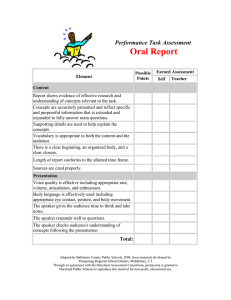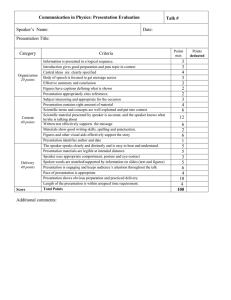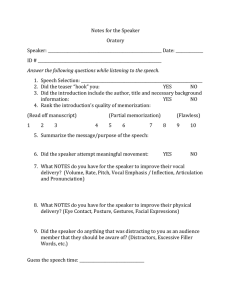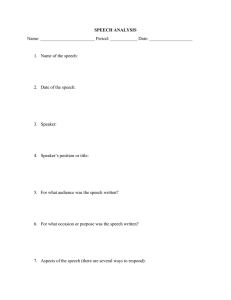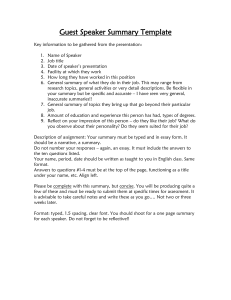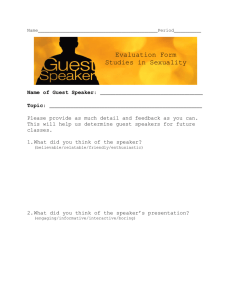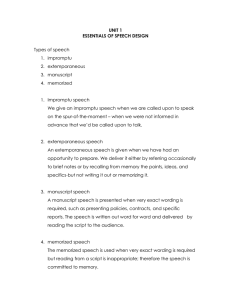Speech Vocabulary Terms
advertisement
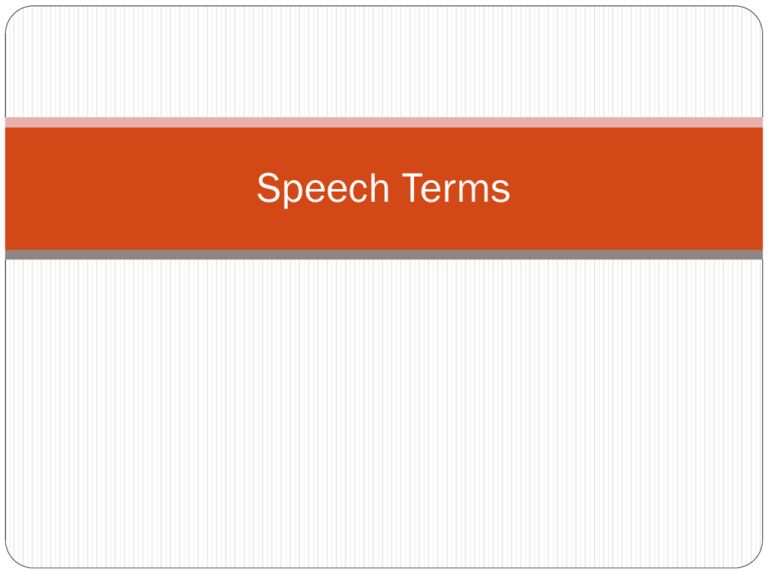
Speech Terms Body Language A type of nonverbal communication that involves use of the body such as gestures, posture, or movement Demonstration this speech features the physical display and assembly of steps in a process while explaining each along the way and reaching completion Outline the main features of a speech usually presented in sentences, phrases, or single words Communication Intentional or unintentional words, actions, or symbols which others interpret the beginning of a speech which should get the audience’s attention, give them a reason to listen, and introduce the topic. Debatable Proposition a proposal that has at least two clearly distinguishable (and often opposing) points of view in which the speakers have an interest: a controversy Inform to instruct; to provide information Audience the group of listeners in any public speaking situation who make the communication transaction with the speaker complete. Conclusion The part of a speech which summarizes and emphasizes the speaker’s main ideas. Impromptu a speech given with little or no advance preparation Entertain to capture and hold the attention and imagination of the audience. the process of influencing another to change, modify, or adopt an attitude or behavior Pet Peeve something that upsets or disturbs you or causes you to react negatively Plagiarize to take someone else’s work and represent it as your own Posture the position of your body Poise to maintain a calm, steady, gracious and assured manner Purpose the goal of a presentation, or what the speaker hopes to accomplish by making the presentation Extemporaneous a speech given with an outline or a few notes Vocal Qualities the various aspects of vocal delivery such as tone, rate, pitch, volume and attractiveness of the voice physical and electronic means of assisting the audience to literally see what the speaker is talking about.
